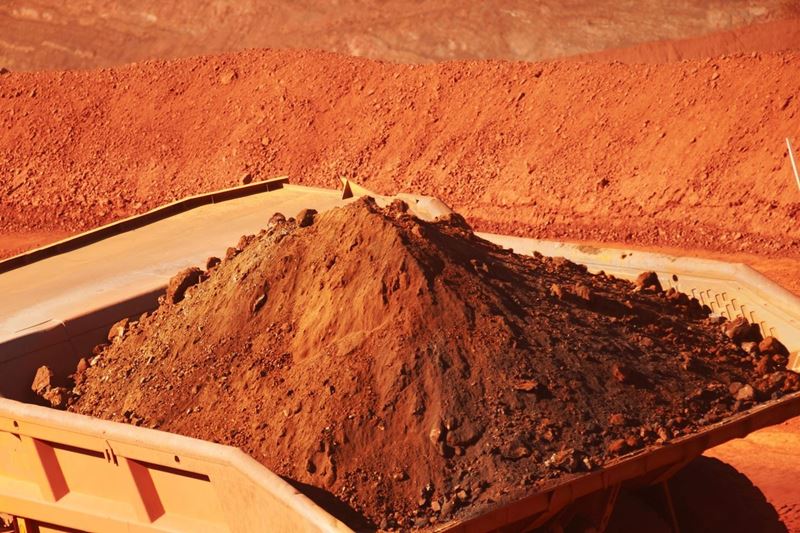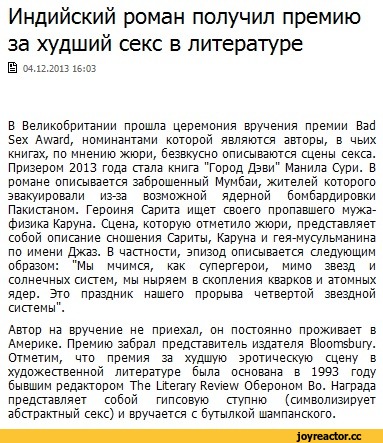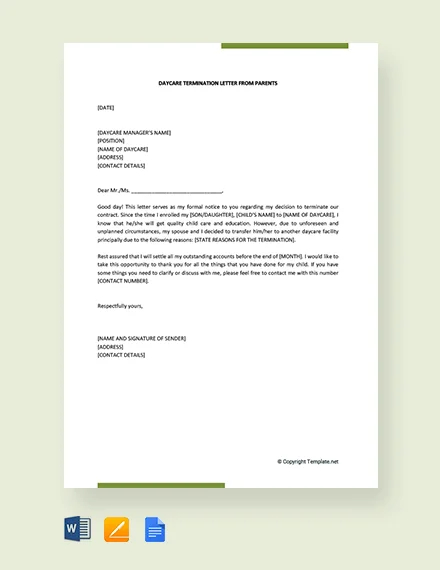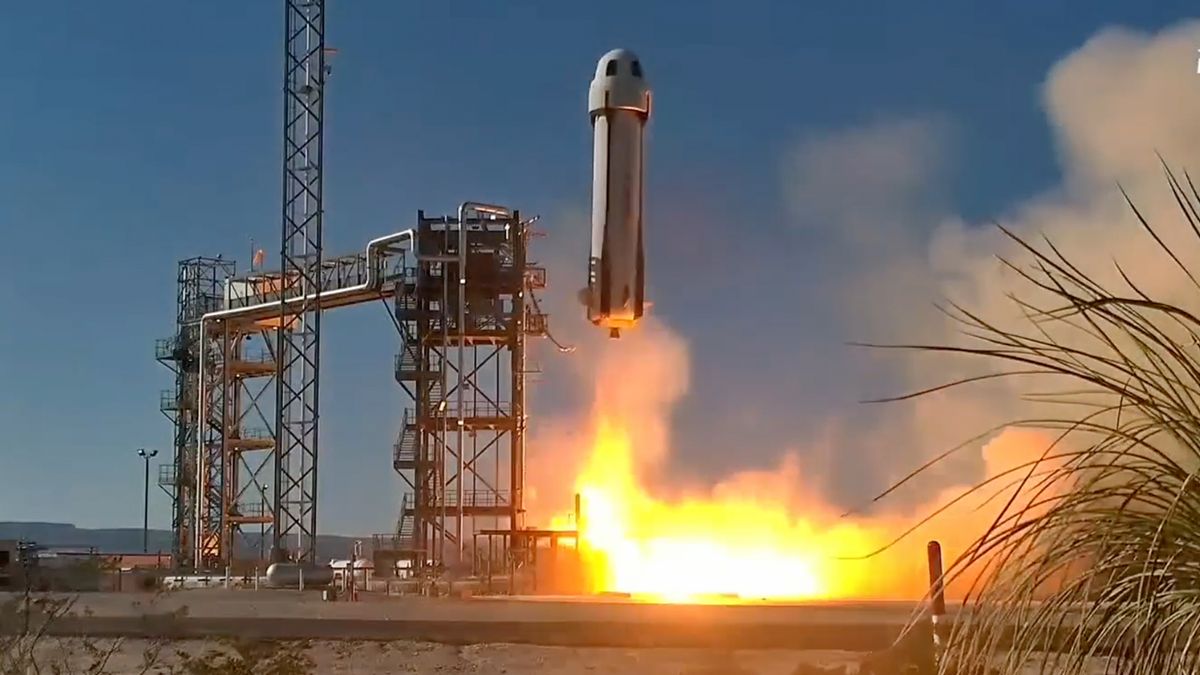Falling Iron Ore Prices: China's Steel Industry Slowdown And Its Consequences

Table of Contents
China's Steel Industry Slowdown: The Core Issue
China's steel industry, once a powerhouse driving global iron ore demand, is experiencing a significant slowdown, directly impacting iron ore prices. This contraction stems from several interconnected factors:
Reduced Demand from Construction and Infrastructure Projects
China's ambitious infrastructure projects, a cornerstone of its economic growth and a major driver of steel demand for many years, are slowing down. This reduction is due to:
- Reduced government spending: A shift in fiscal policy has led to decreased government investment in large-scale infrastructure projects.
- Shift in focus towards sustainable development: The emphasis is now on more environmentally friendly and sustainable development models, which often require less steel-intensive construction methods.
- Overcapacity in the real estate sector: A property market slowdown and concerns about overbuilding have significantly reduced demand for steel in the construction sector. This oversupply of real estate has dampened the need for new construction, and thus, less steel is required.
Impact of China's Economic Slowdown
The broader Chinese economic slowdown is a major contributing factor to the reduced demand for steel, thus influencing falling iron ore prices. This slowdown manifests in several ways:
- Decreased manufacturing output: Lower industrial production across various sectors naturally translates into reduced steel consumption.
- Lower consumer spending: Weakening consumer confidence and reduced disposable income lead to decreased demand for manufactured goods, many of which rely on steel in their production.
- Global economic uncertainty impacting Chinese exports: Global economic headwinds are affecting Chinese exports, further impacting industrial production and the subsequent demand for steel.
Environmental Regulations and Production Cuts
Stringent environmental regulations implemented by the Chinese government are forcing steel mills to curb production, creating a supply-side pressure contributing to falling iron ore prices. These regulations include:
- Increased scrutiny of carbon emissions: The government is cracking down on carbon emissions from steel production, a significant source of pollution.
- Implementation of stricter emission standards: New and stricter environmental standards are being enforced, requiring steel mills to invest in costly upgrades or face penalties.
- Penalties for non-compliance: Heavy fines and sanctions for non-compliance with environmental regulations are forcing steel mills to reduce output.
Global Impact of Falling Iron Ore Prices
The decline in iron ore prices has a cascading effect, impacting various countries and industries globally.
Impact on Iron Ore Producing Countries
Countries heavily reliant on iron ore exports, such as Australia and Brazil, are experiencing significant economic repercussions:
- Reduced government revenue and potential budget cuts: Lower export revenues directly impact government finances, potentially leading to budget cuts in various sectors.
- Job losses in the mining sector: Reduced demand for iron ore inevitably leads to job losses in the mining sector and related industries.
- Pressure on mining companies to cut costs: Mining companies are facing intense pressure to reduce operating costs to maintain profitability in this challenging market environment. This often leads to further job losses and reduced investment in exploration and expansion.
Effects on Steel Prices and Global Manufacturing
While lower iron ore prices generally translate to slightly lower steel prices, the relationship isn't always direct and varies depending on several factors:
- Increased competitiveness in global steel markets: Lower steel prices lead to increased competition among steel producers globally.
- Potential impact on manufacturing costs across various sectors: Lower steel prices can potentially reduce manufacturing costs across a wide range of industries, providing some offsetting benefit.
- Variations in steel price changes due to regional factors: Steel price changes are influenced by regional factors, such as local demand, transportation costs, and energy prices, leading to discrepancies across different regions.
Ripple Effect on Related Industries
The slowdown in the steel industry has a knock-on effect on related industries, particularly in the shipping and logistics sectors:
- Decreased demand for shipping services: Reduced iron ore and steel shipments lead to a decline in demand for shipping services.
- Reduced freight rates: Lower demand results in reduced freight rates, affecting the profitability of shipping companies.
- Potential job losses in related industries: The ripple effect extends to port operations, logistics companies, and related support services, potentially causing job losses in these sectors.
Future Outlook and Potential Recovery Strategies
Predicting the future of iron ore prices requires careful analysis of several converging factors.
Predicting Future Iron Ore Demand
Forecasting future iron ore demand depends heavily on understanding trends in China's construction, infrastructure spending, and overall economic growth:
- Factors influencing future demand projections: These include government policies, infrastructure development plans, technological advancements in steel production, and global economic growth.
- Potential for rebound in infrastructure spending: A potential increase in infrastructure spending in China or other emerging economies could drive up demand.
- Technological advancements in steel production: New technologies and processes, like improved recycling techniques, may influence the overall demand for iron ore in the future.
Strategies for Iron Ore Producers
To thrive in this volatile market, iron ore producers need to adopt strategic measures:
- Exploring new markets outside of China: Diversification of markets is crucial to reduce reliance on a single major consumer.
- Investing in research and development: Innovation in mining techniques, processing technologies, and value-added products can boost competitiveness.
- Improving operational efficiency to reduce costs: Streamlining operations and improving efficiency are essential for maintaining profitability in a low-price environment.
Conclusion
The decline in iron ore prices, primarily driven by China's slowing steel industry, presents significant challenges for producers and consumers alike. Reduced demand from construction, the economic slowdown, and increasingly stringent environmental regulations are key factors. The global impact is extensive, affecting numerous countries and industries. To navigate this challenging landscape, iron ore producers must adapt by diversifying markets, investing in innovation, and enhancing efficiency. Understanding the dynamics of falling iron ore prices is crucial for businesses and policymakers to make informed decisions and mitigate potential risks. Stay informed about developments in China's steel industry and the fluctuating global iron ore market to effectively manage your exposure to these falling iron ore prices.

Featured Posts
-
 Zolotaya Malina Kto Poluchil Nagradu Za Khudshiy Film Goda S Uchastiem Dakoty Dzhonson
May 09, 2025
Zolotaya Malina Kto Poluchil Nagradu Za Khudshiy Film Goda S Uchastiem Dakoty Dzhonson
May 09, 2025 -
 Nc Daycare Center Suspension Parents Rights And Resources
May 09, 2025
Nc Daycare Center Suspension Parents Rights And Resources
May 09, 2025 -
 Konflikt Kinga I Maska Pikantnye Podrobnosti Iz Sotsseti X
May 09, 2025
Konflikt Kinga I Maska Pikantnye Podrobnosti Iz Sotsseti X
May 09, 2025 -
 A And E Records Accessed Nottingham Families Demand Answers After Stabbing Tragedy
May 09, 2025
A And E Records Accessed Nottingham Families Demand Answers After Stabbing Tragedy
May 09, 2025 -
 Blue Origins New Shepard Launch Abort Due To Technical Issue
May 09, 2025
Blue Origins New Shepard Launch Abort Due To Technical Issue
May 09, 2025
